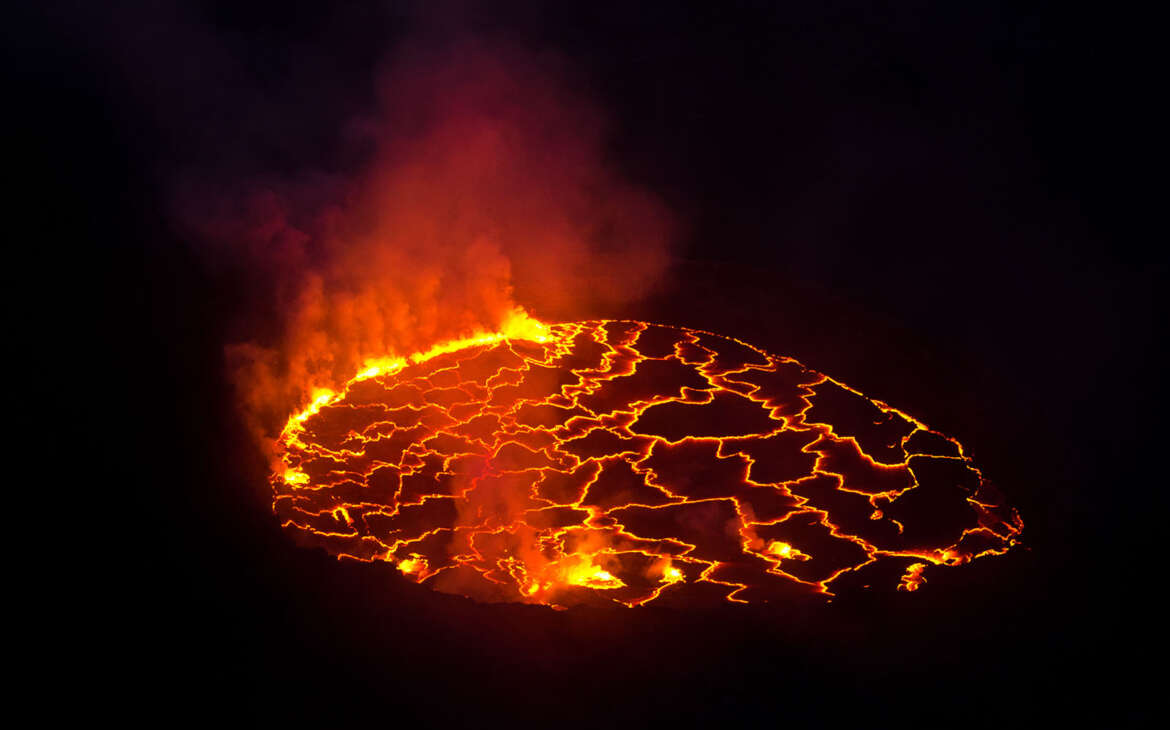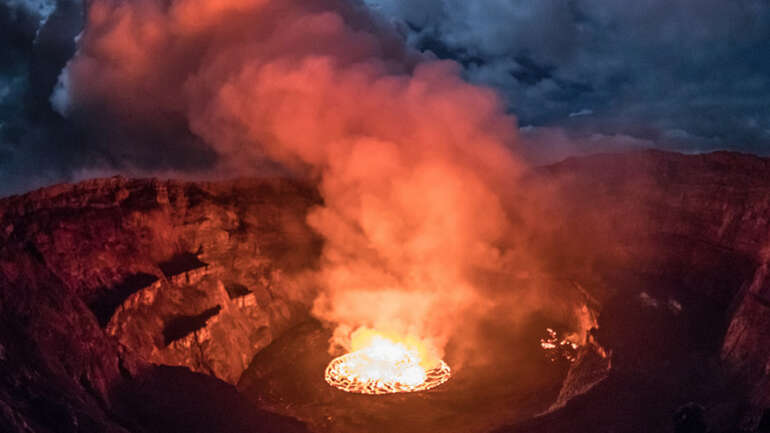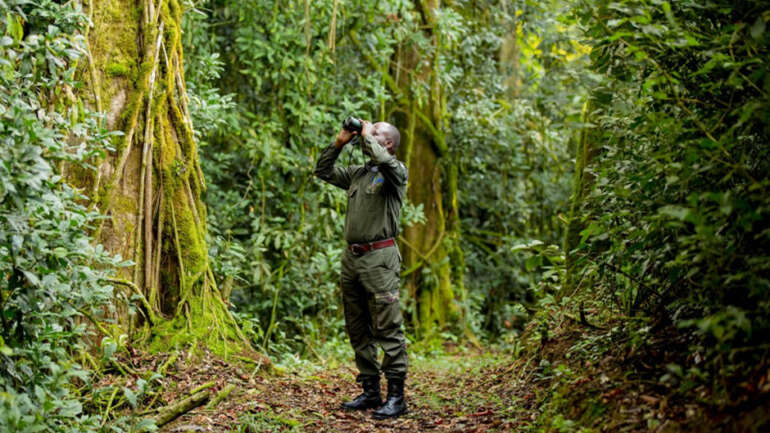No trip is amazing and complete without a visit to Virunga National Park to trek the famous mountain gorillas of this extraordinarily diverse ecosystem and an opportunity to hike up the Nyiragongo Volcano. The Virunga National Park is the largest park and Africa’s oldest, covering 3,000 square miles on the border with Uganda and Rwanda. It is home to about one quarter of the world’s mountain gorilla population as well as elephants, and lions.
Founded in 1925 by Belgium’s King Albert I, a visit to Virunga is a-once-in-a-lifetime experience, with its forests, savannah grasslands, lava plains, swamps, erosion valleys, active volcanoes, and the glaciated peaks of the Rwenzori Mountains. The Park contains over 218 mammal species, 706 bird species, 109 reptile species and 78 amphibian species.
It also serves as refuge to 22 primate species of which three are the great ape – mountain gorilla (Gorilla beringei beringei), the eastern plain gorilla (Gorilla beringei graueri) and the eastern chimpanzee, with a third of the world population of mountain gorillas.
Although mountain gorillas are the park’s flagship attraction, they are just a tiny part of Virunga’s immense biodiversity. Despite decades of political volatility and civil war, and sporadic killing of mountain gorillas by poachers and militias, the total population of Earth’s biggest apes has actually increased to more than 900 in the region. Because of their low numbers, they remain critically endangered.
Gorilla trekking in Virunga National Park
Gorilla trekking is done in Virunga National Park a UNESCO World Heritage Site. The gorilla safari experience commences at Bukima patrol post. Visitors gather at the headquarters for a short briefing about the dos and don’ts of the gorillas. Following the briefing, visitors are split into groups according to fitness level, age as well as the location of the gorilla family at the same time.
The trek usually takes from 1 to 2 hours searching for the great apes with trained and armed park rangers depending where the mountain gorillas spent their previous night. The time allowed to spend with mountain gorillas is limited to one hour with opportunities for taking photos and videos shoots while watching them the way they speed their daily life.
Nyiragongo Volcano Trek
A gorilla safari in Congo also gives you an opportunity to hike the Nyiragongo Volcano. The largest lava lake in the world is at the bottom of Mount Nyiragongo, one of two active volcanoes in the southern sector of Virunga, where another six dormant volcanoes rise above the forests.
Visitors can pay US$300 to trek to the top, and spend a night at the edge of the crater. In 2002, the lava lake erupted through the side of the mountain, and the molten rock carved a path of destruction through the forests all the way into Goma, destroying several thousand buildings and leaving 120,000 people destitute.
Trekkers to the summit of Nyiragongo volcano always commences at Kibati patrol post. 30 minutes by car from Goma and 1 hour from Rumangabo. The Park rangers lead all treks and porters are always available for hire. The fitness for each group determines on the average time required to reach the summit usually takes 6 -7 hours depending on one’s physical fitness and one night is spent on the Nyiragongo volcano shelters which is included in the park hiking fee.
The beautiful active volcano Nyiragongo can be seen clear at night. This also makes it possible to see the boiling lava by night, when it appears to be even brighter. The shortest Nyiragongo Hike in Virunga National Park is 2 days and one day is always climbing and the second day is coming back.
We advise you to bring cold weather and full rain gear such as moisture wicking base layer, sweater of fleece, jacket, rain resistant pants, a hat, sunscreen glasses, and insect repellent, warm socks. Porters are available at $24 per person and a walking stick costs $5 per stick. Visitors who do not stay at Mikeno lodge should book a Mikeno package at $100 USD per person.
Guests will leave early in the morning and start the descent back to Kibati. Average descent time is four hours and once at the bottom, guests will be transported back to Goma with drop –off at the Grande Barriere.


